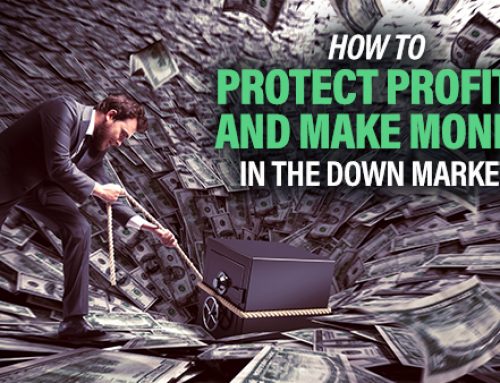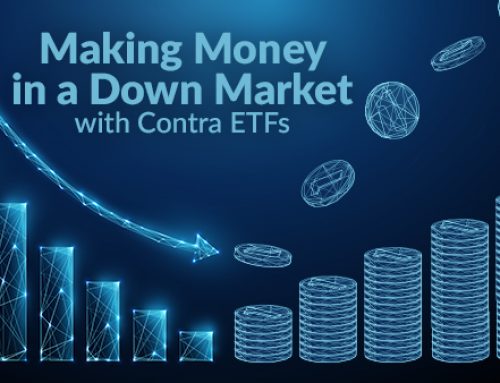Investing in a down market can feel a lot like sailing into a storm. It’s daunting, filled with unpredictability, and without a sound plan, the chances of running aground are high.
But what if we told you that a down market is not always a sign to abandon ship? What if, under certain circumstances, this storm could be weathered, or even turned to your advantage? This begs the question…should you invest when the market is down, or are you better off sitting on the sidelines?
In this guide, we are going to unlock the mystery of down markets. We will delve deep into what causes a market downturn, the factors that contribute to such conditions, and the crucial question on every investor’s mind – what should you do with your capital?
Whether you choose to close your positions and convert to cash, or pivot your investing strategy and make the most of current market conditions, VectorVest is here to provide insights and real-time data to help you make sound, emotionless investments. First, what does a down market mean?
What is a “Down Market”?
You can likely surmise that a down market is a period where the stock market presents less than favorable conditions.
It’s typically a time when the US market as a whole is in disarray – as the stock market and the outlook of our economy are heavily intertwined. In fact, rising interest rates and inflation often contribute to a down market – but we’ll talk more about that later on.
For now, let’s look at the definition of a “down market”.
Definition of a Down Market
A “down market” is a phase in the market cycle when stock prices are generally declining. This downtrend can last for several weeks, months, or even years in more severe scenarios.
It is a period of pessimism and caution, where investor sentiment is negative, and fears of further declines often create a self-sustaining cycle of selling.
Distinguishing Bear Markets From Bull Markets
If a down market is a bear, then its counterpart, an “up market”, is a bull. While a bear market denotes falling stock prices and negative sentiment, a bull market is characterized by rising stock prices, optimism, and investor confidence.
These two beasts rule the financial jungle, and being able to tell the difference between them can be crucial to your investing success.
In terms of numbers, a market is generally considered a bear market if there is a decline of 20% or more from recent highs in broad market indexes like the S&P 500. Conversely, a bull market is typically recognized when there is a rise of 20% or more from recent lows.
How Can You Tell When the Market is Down?
The most direct way to identify a down market is by tracking the movements of major stock market indices. A persistent decline in the S&P 500, Dow Jones Industrial Average, or Nasdaq Composite over a prolonged period is a clear sign that the market is in a downward phase.
However, for the individual investor, constantly monitoring these indices and interpreting their movements can be a daunting task. That’s where tools like VectorVest’s Color Guard come into play. With the Color Guard, you can get a quick snapshot of the market’s health at a glance. It’s the best stock market sentiment indicator you can have in your arsenal.
The system uses a color-coded scheme – green for up, yellow for caution, and red for down – to indicate the state of the market on any given day. It simplifies market tracking, making it easier for you to time your investments and adjust your strategies as needed.
Of course, there are other ways to gauge market direction, such as tracking economic indicators like unemployment rates, GDP growth rates, and inflation, or observing investor sentiment through news, analyst reports, and social media.
But the simplicity and ease of use of VectorVest’s Color Guard make it a preferred tool for many investors. Later on we’ll talk more about the role this specific tool plays in your investment strategy along with the other offering in our software.
For now, though, let’s take a look at how the stock market works to provide an understanding of what causes a down market.
What Can Contribute to a Down Market?
There are 3 major contributors to a down market. A thorough understanding of these factors helps you see the storm forming before it actually starts pouring – so you can get out with your cash before it’s too late, or at least pivot your trading strategy.
So, let’s take a deep dive into earnings, inflation, and interest rates to assess how they drive the direction of the stock market.
Poor Earnings
Company earnings directly affect a stock’s price. These figures act as a barometer of a company’s health and prospects, influencing investor sentiment and market behavior.
When positive news arises – a successful product launch, for instance – investors might anticipate an uptick in earnings, which can drive stock prices up.
Conversely, events predicted to harm a company’s earnings can cause stock prices to tumble. Therefore, poor earnings represent a crucial factor that can contribute to a down market.
We have a detailed guide on the full EPS meaning in the stock market if you’d like to learn more. But, this is just one piece of the down market puzzle…
Rising Inflation
Inflation, the general increase in prices and fall in purchasing value of money, can be a formidable foe to the stock market. As it rises, it impacts various sectors of the economy, driving up the costs of raw materials, labor, and services.
If companies can’t offset these cost increases with higher productivity and price hikes, their earnings may suffer. Decreased corporate earnings can subsequently cause a downturn in the stock market.
We have a few great resources on how to protect yourself from inflation in our blog. You can learn about the best inflation hedge stocks, or gain advice on what inflation hedging is in general. But, there’s one more contributor to a down market we must discuss.
Rising Interest Rates
The third factor that can contribute to a down market is a rise in interest rates. This usually happens when the Federal Reserve, aiming to maintain monetary stability, curbs the money supply to counteract rising inflation.
Higher interest rates make borrowing more expensive, which can deter investment and slow economic growth. This anticipated slowdown can dampen investor confidence, often triggering a bearish phase in the market.
Does Investing in a Down Market Make Sense?
Now, let’s get into what you came here for…does investing in a down market make sense? Should you invest when the market is down, or is this your sign to get your cash out and sit on the sidelines for a bit?
Ultimately, your specific swing trading strategies or market timing strategies you’re following will influence how you behave when conditions are less than optimal. That being said, let’s take a look at both sides of the coin to help you determine what you should do when the market is down.
The Case for Investing in a Down Market
Investing during a down market is a tempting prospect for many investors. After all, the notion of “buy low, sell high” is the cornerstone of investment strategy. Many argue that downturns can reveal true investment opportunities, as quality stocks can be purchased at discounted prices. This is when you buy the dip, right?
Furthermore, proponents of counter-cyclical investing argue that down markets can provide ripe opportunities to invest in solid businesses whose shares have been oversold.
This strategy, however, requires a deep understanding of a company’s fundamentals, along with a robust risk appetite, to potentially reap the rewards once the market recovers.
Why You May Be Better Off Sitting on the Sidelines Until Conditions Improve
While the above arguments may sound appealing, it’s critical to realize that investing in a down market carries significant risks. Markets can stay depressed longer than anticipated, leading to prolonged periods of negative returns.
In such cases, cash is indeed king. Cash not only provides a buffer against further market declines but also offers you the flexibility to seize investment opportunities when the market eventually turns around.
Plus, not every investor possesses the expertise to differentiate between genuinely undervalued stocks and those cheap for a reason. Without comprehensive research and analysis, it’s easy to fall into value traps, buying stocks of companies that might be facing serious financial trouble.
So, Should You Invest When the Market is Down?
So, what’s the verdict? Should you invest when the market is down or take a breather while the conditions correct themselves?
While it’s true that the stock market has historically trended upwards over the long term, and timing the markets is entirely possible, it may not be the right approach for you. Here’s why.
It’s tough to precisely predict the bottom of a market downturn to buy at the absolute lowest point. The general unpredictability and volatility of down markets can result in substantial financial loss if not navigated carefully.
Therefore, for most investors, the answer is no. It’s often a wiser move to convert to cash and await more favorable market conditions. By doing so, you’re preserving your capital from further erosion and giving yourself the flexibility to make strategic investments once the market begins to improve.
That said, every investor’s situation and risk tolerance are unique. Some might see a down market as an opportunity to buy valuable assets at discounted prices, but it’s crucial to have a comprehensive understanding of the associated risks and challenges.
Utilizing tools like VectorVest’s Color Guard can give you a real-time snapshot of market conditions, helping you make informed decisions about when to invest, hold, or switch to cash. With that being said, allow us to provide some insights on how to invest in a down market if you choose to do so.
How to Invest in a Down Market: Tips for Preserving Capital in Poor Conditions
Investing in a down market can be like finding your way through a maze in the dark. With careful planning and strategic moves, however, you can not only safeguard your investment but also prepare for a more favorable turn in the market.
Here’s how to invest in a down market if you choose to take the risk:
Stick to Your Investment Plan
In a down market, it’s easy to let panic and fear drive your investment decisions. However, it’s crucial to remember that market downturns are a natural part of the investment cycle.
To weather the storm, adhere to your long-term investment plan. If you’ve set clear investment goals and time horizons, it’s best not to derail your strategy based on short-term market fluctuations. Leverage the VectorVest system to remove emotion from your decision-making and cut loss when necessary.
Diversification as a Safety Net
Diversification is one of the most effective risk management strategies in investing. By spreading your investments across various asset classes and sectors, you can reduce the impact of a poor-performing investment on your overall portfolio.
Keep in mind that diversification doesn’t guarantee profits or protect against loss in declining markets, but it can provide a measure of safety in times of market turbulence.
Hunting for Safe Havens
In a down market, investors often seek refuge in safe-haven assets – those that are expected to retain or increase in value during times of market turbulence.
These could be traditionally stable sectors such as utilities and consumer staples or assets like gold and treasury bonds. Remember, while safe havens can provide some stability, they are not immune to risk.
Rebalancing the Portfolio
Market downturns can throw your portfolio’s asset allocation out of balance. If that’s the case, rebalancing by readjusting your investments back to your original asset allocation mix can be a prudent move. It can also present an opportunity to buy assets at lower prices.
Considering Defensive Stocks
Defensive stocks are those that provide a consistent dividend and stable earnings regardless of the state of the overall stock market. They can be a smart addition to your portfolio in a down market. These often come from sectors like utilities, healthcare, and consumer goods.
Leveraging VectorVest in Down Markets
In volatile times, the right tools can make all the difference. VectorVest’s Color Guard gives you a clear indication of the market’s direction, helping you make informed decisions.
It lets you know when the market is in a downtrend, giving you the opportunity to shift your strategy or move to cash. In essence, it’s like having a personal guide through the tumultuous journey of a down market.
Not only will you have access to the best market timing indicator to help you time your trades to perfection and know when to take profits, but you’ll also be able to effortlessly uncover the best stocks to swing trade. Our stock screeners bring the best opportunities to your screen on a daily basis.
From helping you find the best time of day to buy stocks to figuring out the best day of the week to sell stock, to helping you find stocks for swing trading in the first place: VectorVest is an invaluable tool in your arsenal.
So, why not find out firsthand what makes this the best swing trading platform, and frankly, the best stock analysis app in general? Get a stock analysis free today and see how it works. You’ll never go back to investing the old way.
Final Thoughts on Investing in a Down Market
So, should you invest when the market is down? While it depends on your unique trading strategy, investing in a down market is typically not a good idea.
While there might be opportunities lurking in the mist, the uncertainty and risk often outweigh the potential rewards. The adage ‘cash is king’ rings particularly true in such situations, as holding onto your capital and patiently awaiting better market conditions can be a wise choice.
However, if you choose to venture into the tumultuous sea of a down market, remember the strategies discussed in this guide: Stick to your investment plan, diversify your portfolio, seek safe havens, rebalance as needed, and consider defensive stocks.
These tactics can help preserve your capital and potentially offer some stability amidst the chaos. If you’d like, you can learn swing trading in our blog or through our courses. We have invaluable insights on swing trading for beginners and experts alike.
Some of our most popular include our comparison of time in the market vs timing the market and swing trading vs day trading, our tips on how to find stocks for swing trading, and our resource on the best indicators for swing trading, position trading, trend trading, and more.
But, at this point, it’s time to bring our conversation on investing in a down market to a close. We hope to have offered you clarity on this topic, and we hope you’ll invest in yourself today by setting up your subscription to our stock analysis software or mobile stock advisory.






Leave A Comment